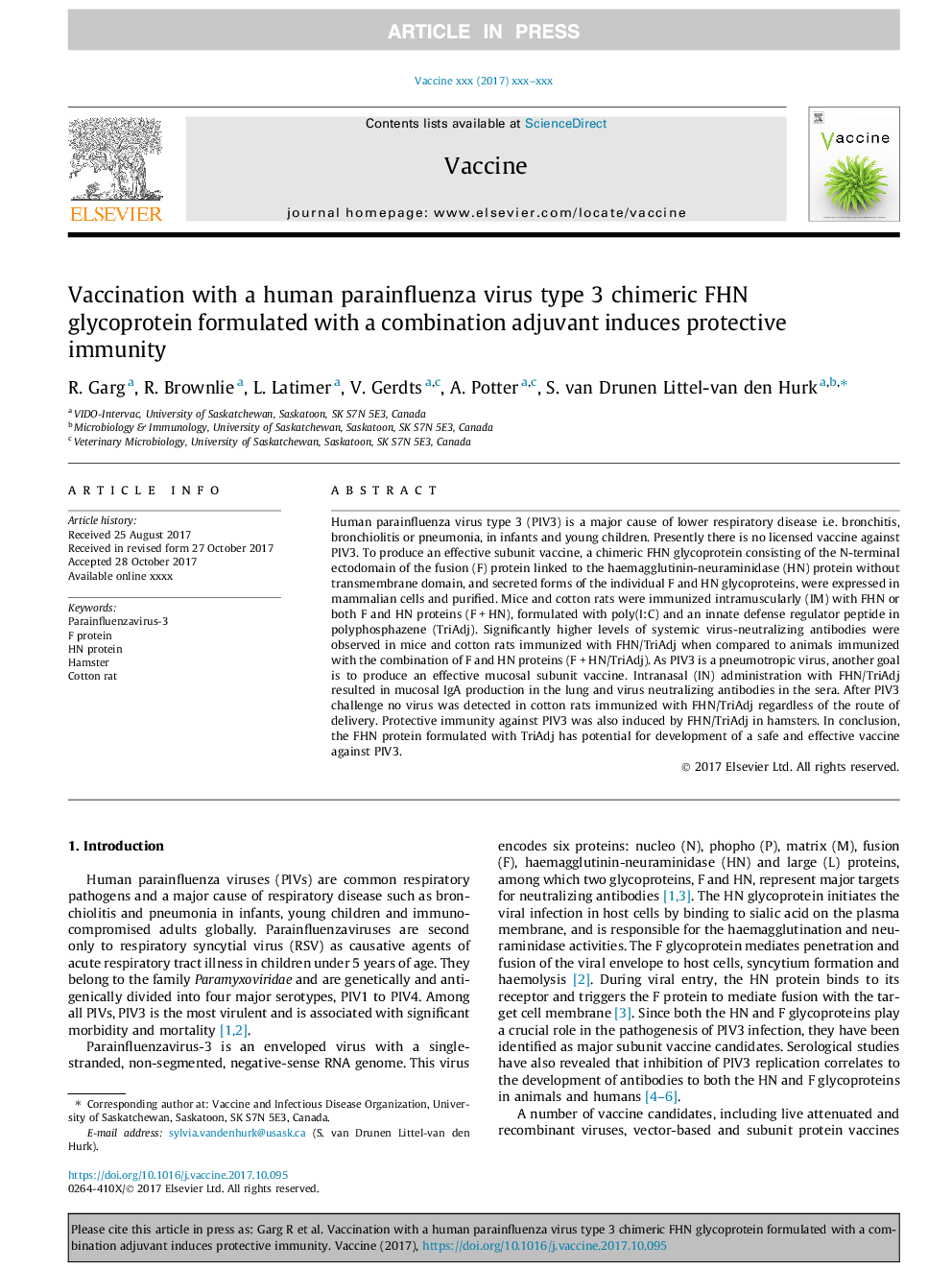| Article ID | Journal | Published Year | Pages | File Type |
|---|---|---|---|---|
| 8486440 | Vaccine | 2017 | 8 Pages |
Abstract
Human parainfluenza virus type 3 (PIV3) is a major cause of lower respiratory disease i.e. bronchitis, bronchiolitis or pneumonia, in infants and young children. Presently there is no licensed vaccine against PIV3. To produce an effective subunit vaccine, a chimeric FHN glycoprotein consisting of the N-terminal ectodomain of the fusion (F) protein linked to the haemagglutinin-neuraminidase (HN) protein without transmembrane domain, and secreted forms of the individual F and HN glycoproteins, were expressed in mammalian cells and purified. Mice and cotton rats were immunized intramuscularly (IM) with FHN or both F and HN proteins (Fâ¯+â¯HN), formulated with poly(I:C) and an innate defense regulator peptide in polyphosphazene (TriAdj). Significantly higher levels of systemic virus-neutralizing antibodies were observed in mice and cotton rats immunized with FHN/TriAdj when compared to animals immunized with the combination of F and HN proteins (Fâ¯+â¯HN/TriAdj). As PIV3 is a pneumotropic virus, another goal is to produce an effective mucosal subunit vaccine. Intranasal (IN) administration with FHN/TriAdj resulted in mucosal IgA production in the lung and virus neutralizing antibodies in the sera. After PIV3 challenge no virus was detected in cotton rats immunized with FHN/TriAdj regardless of the route of delivery. Protective immunity against PIV3 was also induced by FHN/TriAdj in hamsters. In conclusion, the FHN protein formulated with TriAdj has potential for development of a safe and effective vaccine against PIV3.
Keywords
Related Topics
Life Sciences
Immunology and Microbiology
Immunology
Authors
R. Garg, R. Brownlie, L. Latimer, V. Gerdts, A. Potter, S. van Drunen Littel-van den Hurk,
